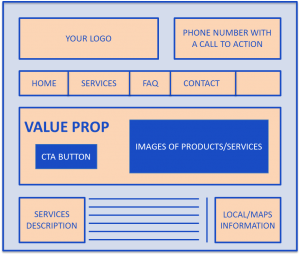Financial woes for the streaming giant could have a silver lining for advertisers.
Marketers have been waiting for this moment. As more TV viewers cut the cord and turned to streaming, Netflix held off on ads and clung to subscriptions as the primary revenue stream for their service. Now that the streaming giant is losing subscribers, co-CEO Reed Hastings says it’s open to an ad-supported tier.
Streaming in flux. Streaming watchers are seeing their TV bills climb as they have to pay different services à la carte to watch hit shows on separate platforms like Disney+, Amazon, Hulu and Netflix. Some streamers have experimented with multiple tiers – viewers pay less to have shows interrupted with ads.
For instance, Warner Bros. Discovery’s HBO Max offers a premium ad-free tier at $ 14.99 per month and a $ 9.99 tier with ads. Streaming advertisers see this as Netflix’s opening and the overall direction of the industry. It puts consumers in the driver’s seat. They pay less voluntarily, so they’re accepting that there will be ads.
Growing market for streaming ads. “Only consumers willing to view ads would select that version instead of an ad-free tier,” said Andre Swanston, SVP, media and entertainment for TransUnion. “Ad-supported streaming viewing has continued to grow in the U.S. and abroad.”
Ad-supported video-on-demand (AVOD) is expected to surpass 150 million viewers by the end of 2023. Netflix entering the space could raise those estimates even higher.
“It is no surprise that Netflix is considering an ad-supported model,” said Andrew Frank, VP, distinguished analyst at Gartner. “The explosion of competitive premium streaming offerings from Amazon, Apple, Disney/Hulu, HBO, Paramount, Peacock, and so forth have drastically shifted the balance of supply and demand since the days when Netflix had the streaming SVOD market to itself. With such high-powered competition and so many ad-supported options, the need to diversify revenue is unavoidable.”
Experience. Ads on Netflix would still be a major change for the subscribers who stay. It might be one reason why the streamer has avoided ads. But now they need revenue to replace subscribers and password sharers.
“I expect Netflix’ first priority will be to protect the quality of its viewing experience by carefully screening its ad partners and thoughtfully aligning their messages with appropriate contexts,” said Frank.
“Their experience with product placement in Stranger Things reveals that they’re hardly starting from scratch in cultivating deep creative connections with premium brand advertisers. So, I imagine they’ll avoid the indirect sales arrangements and the programmatic fray for now and focus on innovating with a relatively narrow group of marquee sponsors.”
For Netflix, the experience is also its content.
“The streaming business is a hit-driven enterprise where consumers expect value every time they open an app, and where the cancel button and the competition is a click away,” said Eric John, vice president, Media Center at IAB. “I’m surprised Netflix didn’t arrive at the strategy of returning to growth by offering consumers lower prices sooner.”
Adtech ready to help out. Regardless of Netflix’s next tech moves, CTV is a booming channel for adtech, and those platforms have been waiting for ads on Netflix. And so have advertisers.
“Netflix inventory will be some of the most sought after across the entire TV landscape,” said Swanston. “The product and brand categories will likely be similar to that of Hulu and other leading streaming platforms.”
He added that Netflix would need to partner with leading data and identity providers, as well as third-party measurement and attribution vendors to stay competitive with larger more diverse consumer data ecosystems like Amazon and Google.
“There’s a lot of pent-up demand from advertisers who want to reach Netflix viewers, especially younger, more affluent households that are hard to reach with traditional advertising,” said Swanston.
Why we care. There are larger forces than Netflix at play. As AVOD gains hold in the CTV space overall, ad-supported streaming could be perceived as not just a low-budget option for less-affluent viewers but as a fiscally responsible choice for affluent viewers as well.
Netflix has a lot of longtime customers, and their data is tempting to brands and very valuable. Their situation might even be compared to some of the retailers, like Lowe’s, The Gap and even Walmart, that have launched ad services to boost revenue. The ad value is in all that data and the brand’s connection to its customers.
The post Why a Netflix ad-supported tier would be exciting for advertisers appeared first on MarTech.
MarTech(57)
Report Post






